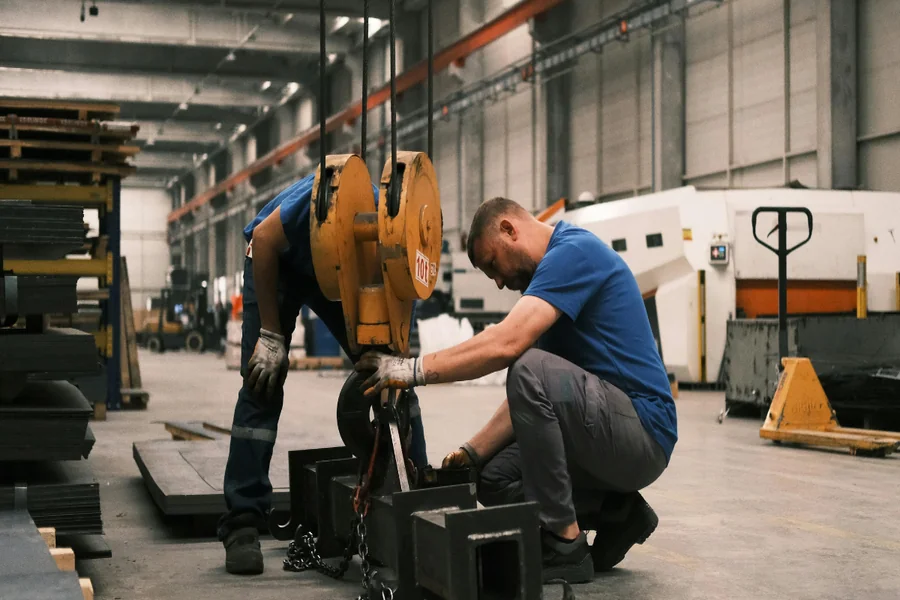Transporting oversized construction machinery requires careful planning, precision, and the right equipment. For large machines like excavators, bulldozers, or cranes, standard trailers often lack the clearance and capacity needed. That’s why professionals rely on lowboy trailers. With a low deck height and high weight capacity, they’re built to move tall, heavy equipment safely and legally. But having the right trailer isn’t enough—securing the load, following regulations, and ensuring road safety are all key to a successful transport.
Understand What a Lowboy Trailer Offers
A lowboy trailer has a dropped deck that sits lower than a standard flatbed, making it ideal for transporting tall equipment without needing special permits.
Key benefits include:
- Lower center of gravity for increased stability
- Higher load capacity for heavy equipment
- Easier loading with reduced ramp angles
- Compliance with bridge and overpass height restrictions
Choosing a lowboy trailer is key to a safe, successful move, especially for wide, tall, or heavy gear.
Pre-Trip Planning Is Critical
Every oversized load should begin with a detailed transport plan. Poor preparation can lead to route delays, fines, or damage to equipment.
Start with these steps:
- Measure the load dimensions (height, width, weight, and length)
- Choose the correct trailer configuration based on those specs
- Check state and local transport regulations regarding oversize loads
- Identify a safe and legal route that avoids low bridges, weight-restricted roads, or sharp turns
A comprehensive plan reduces the chance of unexpected issues and keeps the operation moving efficiently.
Load Equipment Safely and Securely
Once the route and equipment are prepared, the next priority is safe loading. Improper loading can cause serious accidents or damage the machinery in transit.
Follow these loading tips:
- Use ramps or a detachable gooseneck to reduce incline and prevent slippage
- Position the equipment in the center of the lowboy trailer for balance
- Lower movable parts such as booms or buckets to reduce overall height
- Use rated chains and binders to secure all four corners and any moving parts
- Double-check all tie-downs for tightness before departure
Always inspect the equipment and trailer before loading. Loose gravel, oil, or debris can cause slips during loading.
Monitor the Load During Transit
Even with everything strapped down, the job isn’t over once you’re on the road. Oversized construction gear needs regular checks to stay secure.
During transit:
- Stop after the first few miles to inspect tie-downs and brakes
- Check for shifting or vibration that may loosen straps
- Ensure all safety flags, lights, and escort vehicles are functioning if required
- Drive at safe speeds and allow extra time for braking and turns
Monitoring the load and adapting to road conditions is essential for a smooth and secure journey.
Unloading with Care and Control
Unloading heavy gear requires as much care as loading it. Skipping steps or rushing can cause damage or injury.
Steps to follow:
- Park the trailer on level, firm ground
- Inspect the surroundings for overhead lines, uneven surfaces, or obstacles
- Slowly remove chains and restraints in a specific sequence
- Use a spotter to guide the operator during descent
- Avoid sudden movements as the equipment leaves the trailer
Controlling the process from start to finish helps ensure that both the equipment and operators remain safe.
Keep Equipment and Trailers Maintained
Maintenance is key to moving oversized loads successfully. Faulty brakes, weak tie-downs, or worn tires can jeopardize the transport.
Routine tasks include:
- Inspecting the trailer’s suspension, axles, and tires
- Checking hydraulic systems and ramps for wear
- Lubricating moving parts as needed
- Replacing damaged straps, chains, or binders
- Cleaning the trailer after each use
Proper care ensures that the lowboy trailer is always ready for the next heavy-duty haul.
Conclusion
Moving oversized construction equipment doesn’t have to be difficult or risky. With the right tools, like a lowboy trailer, and proper practices, even heavy machinery can be transported safely and efficiently. The key is preparation, secure loading, careful transport, and regular maintenance. By following these steps, your team can handle heavy hauls with confidence and ease.






